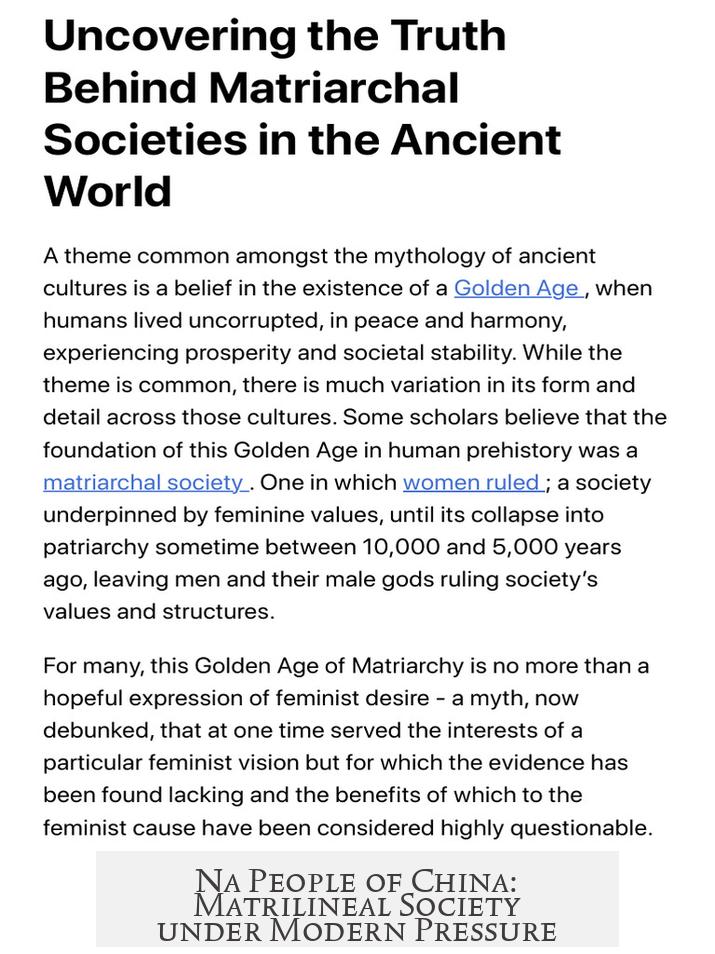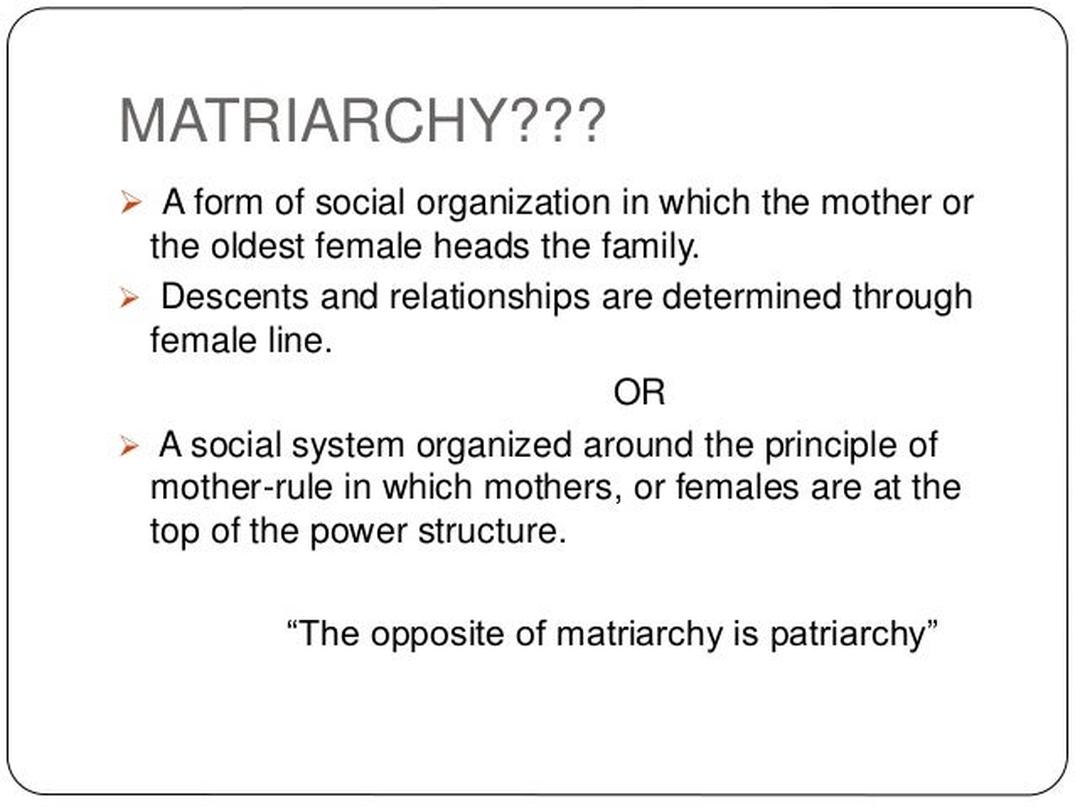There has never been a truly major matriarchal society in recorded history, despite the presence of several notable matrilineal and matrilocal cultures that granted women certain powers and social roles.
Several societies have demonstrated matriarchal traits. However, none achieved full political dominance by women or reversed the global trend of patriarchy. The Iroquois, Na people of China, Minangkabau of Sumatra, and ancient Iberian peoples are key examples frequently cited in this context.
The Iroquois Confederacy exhibited a matrilineal system where descent and inheritance passed through the female line. Their society was also matrilocal, meaning men moved to their wives’ communities after marriage. Women in Iroquois culture enjoyed relative equality compared to many contemporary patriarchal societies. They held significant political influence, especially via their council of clan mothers who selected male chiefs. Yet, women did not directly make political decisions, maintaining a system where men formally led governance. The Iroquois were a dominant regional power and regarded as the first American democracy, confirming their major social role but not a matriarchal system in the strict sense.
The Na people of China maintain a matrilineal lineage with women as central figures in family life. Their social structure has historically prioritized maternal descent and property inheritance through women. However, external pressures, primarily from the Chinese government, threaten this setup, seeking conformity with patriarchal norms.
The Minangkabau of Sumatra are the largest existing matrilineal society today. Property and family names pass through women, who are regarded as heads of households. They retain substantial influence in family and cultural matters. Despite this, political power and religious roles tend to remain male-dominated, so they fall short of a complete matriarchal model.
Ancient Iberian societies, as reported by classical historians like Strabo and Plutarch, showed evidence of gynocratic elements—a system with female arbiters handling tribal conflicts. Their supreme deities were female figures, such as the goddess Mari, associated with fertility and natural forces. Mari’s male consort occupied a subordinate position, highlighting some religious matriarchy. Yet, historical accounts do not confirm centralized female political rule. The Romanization of the Iberian Peninsula led to a decline of these matriarchal or gynocratic customs.
Anthropologists broadly agree that major matriarchal societies are essentially absent from human history. Most societies emphasize patriarchal systems due to their link with inheritance and social control. Patriarchy ensures patrilineal succession by controlling women’s reproductive roles. In contrast, matrilineal systems prioritize descent through mothers, reducing the need for controlling female autonomy. This leads to more egalitarian social structures rather than female dominance. Thus, matriarchies are extremely rare or perhaps never fully realized at a large scale.
Therefore, while many cultures have matrilineal or matrilocal traits and grant women substantial social roles, none meet the criteria for true matriarchy—political and social dominance by women. Instead, historical and anthropological evidence points to matrilineal systems as more common alternatives that differ from patriarchy without reversing gender hierarchies entirely.
| Society | Matriarchal Traits | Women’s Political Power | Status as Major Society |
|---|---|---|---|
| Iroquois | Matrilineal, matrilocal, relative equality | Appoint male chiefs, indirect influence | Dominant regional power, first American democracy |
| Na People (China) | Matrilineal descent | Central role in family but limited political power | Smaller, facing assimilation pressures |
| Minangkabau | Matrilineal, property inheritance | Household authority but limited formal political rule | Largest matrilineal society today |
| Iberian Peoples (ancient) | Matriarchal religious symbolism, female arbiters | Some judicial roles, not full governance | Historical, lost after Roman conquest |
- True matriarchies with full female political control have not been documented as major societies.
- Matrilineal and matrilocal systems are far more common and provide women substantial but not dominant social roles.
- Political power in these societies often remains with men, with women influencing indirectly or in special roles.
- Patriarchy remains linked with controlling reproduction and inheritance, explaining its prevalence over matriarchy.
- Examples such as the Iroquois and Minangkabau illustrate variations on gender roles without full matriarchal governance.
Has There Ever Been a Major Matriarchal Society?

In short, no major true matriarchal society has ever been documented. The nuanced answer is that many societies have exhibited matrilineal or matrilocal traits and have empowered women in meaningful ways, but none have shown full political matriarchy—the actual governance by women as a ruling class—on a large scale.
Let’s unpack this intriguing puzzle of human social organization with some fascinating real-world examples, shedding light on what matriarchy really means and why it remains elusive.
The Iroquois: Matrilineal, Matrilocal, But Not Matriarchal

The Iroquois Confederacy, often called the first American democracy, offers a remarkable case of female influence in a predominantly patrilineal world. Their society was matrilineal, where descent and clan identity passed through the mother’s line. Women also lived matrilocally, meaning husbands moved to live with the wives’ families.
Women enjoyed relative equality and wielded significant social power. They didn’t sit on the grand council or make binding political decisions directly. However, they held the critical authority to appoint the men who did make those decisions. Think of it as backstage power without starring roles—perhaps less glamorous but effective in shaping leadership.
So, were the Iroquois a true matriarchal society? Not exactly. The women exercised influence, but men governed officially. Still, their system defies simplistic labels and shows how women’s roles in governance can be meaningful, even if indirect.
Na People of China: Matrilineal Society under Modern Pressure

The Na people of Southwest China exemplify another matrilineal system. Women inherit family wealth and property, households are built around female heads, and lineage traces through mothers.
However, this matriarchal-like structure faces serious pressure. Chinese state norms prioritize patriarchal family units, pushing the Na people to conform. This clash highlights how dominant social orders can suppress alternative family organizations even when they persist over centuries.
It’s a vivid reminder that even if strong matrilineal practices exist, political and cultural powers may erode or reshape them.
The Minangkabau of Sumatra: Where Matriarchs Reign

Among the Minangkabau in Indonesia, women are famously central to social and economic life. Their society is the world’s largest known matrilineal culture.
Property and family name pass through women, and household authority predominantly rests with the senior female. Men typically leave their maternal homes upon marriage but maintain roles in religious and political spheres.
This balance is intriguing: the matrilineal domain governs daily and familial spheres, while men handle formal leadership roles. Though not a total matriarchy, it’s a clear example of women’s profound societal status.
The Iberian Peoples: Glimpses of Gynocracy in Antiquity

Accounts of ancient Iberian societies hint at matriarchal or gynocratic practices. Notable classical sources like Strabo and Plutarch mention female arbiters playing a critical role in resolving communities’ conflicts.
Their chief deities were female, such as Mari, an arch-goddess linked to rain, fertility, and fate. Interestingly, her male consort was subordinate, a symbolic inversion of typical patriarchal myths.
Military notes from Roman times record that women were frequently taken captive alongside men, possibly reflecting women’s notable social status. However, these matriarchal or semi-matriarchal structures dwindled after Roman rule imposed patriarchal norms.
Why True Matriarchies Are So Rare—or Nonexistent
“The reason to confine and subdue women in a patriarchy is because you ultimately must control their wombs in service to patrilineal succession.”
That quote speaks volumes. Anthropological consensus holds that patriarchy evolved largely as a mechanism to ensure paternity certainty and regulate inheritance through male lines.
In matrilineal societies, lineage and inheritance flow through women, so the need to control women strictly diminishes. This often results in more egalitarian social patterns, but not necessarily outright female dominance. There isn’t a compelling structural reason for women to dominate men in matrilineal systems—the social system just works differently.
So far, no large-scale, sustainable social system has evolved where women hold full political dominance in the way men do in patriarchies.
What Have We Learned?
- True matriarchal societies, where women rule completely and openly, are either extremely rare or possibly nonexistent.
- Many societies—like the Iroquois, Na people, Minangkabau, and the ancient Iberians—offer rich examples of matrilineal descent, female authority in family and religion, or women’s political influence.
- Matriarchal symbolism (like powerful goddesses) or female conflict arbiters doesn’t always translate into full political control.
- Patriarchy’s persistence links closely to controlling lineage and inheritance through men; matrilineal patterns lead to different power balances but not outright female dominance.
Final Thought: Is the Idea of Matriarchy a Mirage—or a Future Possibility?
The concept of a major matriarchal society captivates imaginations because it challenges dominant narratives of history and human nature. Scholars suggest that if matriarchy existed as a mirror form of patriarchy, we might expect to find more clear, lasting examples. Instead, what we see are complex variations of gendered power sharing and social organization.
Could modern or future societies build new models where women genuinely govern completely? Perhaps. Our understanding continues to evolve as we uncover more about past societies and experiment with new social arrangements. But if you’re looking for a historical blockbuster matriarchal empire, you might be chasing a bit of a myth.
Still, the matrilineal and matrilocal societies around the world teach valuable lessons: power and influence come in many forms, and women’s roles in shaping communities have always been more substantial—and nuanced—than history textbooks often suggest.




